Reviews
Francis Ford Coppola
USA, 1986
Credits
Review by Stephen Snart
Posted on 19 August 2010
Source Columbia-Tri Star Home Entertainment DVD
Categories Favorites: Time Travel
Francis Ford Coppola’s Peggy Sue Got Married is in many ways an odd film to consider as a time travel narrative. It does not employ any special effects more advanced than a simple dissolve edit and its protagonist does not require technological innovations, complex machinery, or scientific calculations in order to travel backward in time. In fact, the film skews closer to melodrama than science fiction as it explores a fantastical “what if” scenario rather than a scientific postulation on the possibility of time travel.
Melodrama is a slippery genre to define. One of the constants in defining the melodrama is a plot mobilized by an unachievable romance. Theoretician Thomas Schatz distinguishes that “Generally speaking, ‘melodrama’ was applied to popular romances that depicted a virtuous individual (usually a woman) or couple (usually lovers) victimized by repressive and inequitable social circumstances, particularly those involving marriage, occupation, and the nuclear family.” Other social obstacles frequently include issues of class, age, race, gender, and religion. A film like Peggy Sue Got Married (as well as Jeannot Szwarc’s Somewhere in Time) poses an obstacle that transcends far beyond mere social constraints: time itself.
But even if its roots are more firmly tied to melodrama, Peggy Sue Got Married is nonetheless a time travel film, one often identified as the sister to Back to the Future. Released two years apart, the films share a desire to use time travel as a way of repairing fractured families. But Coppola’s film does not occupy itself with the same excitement and exuberance of the Robert Zemeckis fantasy blockbuster, choosing rather to embrace the melancholy inherent to nostalgia. While Back to the Future suggests that the alteration of a single event can drastically change the happiness quotient of the future, Peggy Sue Got Married is more resigned to accept the cyclical nature of human behavior. George McFly can transform from nebbish peeping tom to Tennis-playing author thanks to his time traveling son’s influence, but Coppola’s characters are depicted as stagnant in personality.
The film begins with Peggy Sue in her 30s. The mother of two teenage children, she finds herself on the verge of divorce from her philandering husband and former high school sweetheart, Charlie. It’s the night of her high school reunion and she’s apprehensive about facing all her former friends with the ignominy of her separation from Charlie. At the encouragement of her daughter, Peggy attends the reunion. The event goes smoothly enough until Charlie arrives and the pressure of seeing him in front of all their peers causes her to faint. When she regains consciousness, she finds herself back in 1960 during her senior year of high school. She takes the opportunity to end her relationship with Charlie before it really begins. She attempts to distance herself from Charlie and tries to find love elsewhere, specifically in the arms of classmate Michael Fitzsimmons, a track star and aspiring writer. But she continues to find herself drawn back to Charlie, both through his insistence and through the subtle charms that led her to fall in love with him in the first place. In the end, she returns to Charlie when she sees a picture that reminds her of the two children they will have and the film concludes with her waking up in the present, resting in a hospital bed with Charlie by her side.
As might be expected, Nicolas Cage’s performance as Charlie is one of the more perplexing aspects of the film. Throughout his career, Francis Ford Coppola has been known to employ family members, frequently to the detriment of the project. The performance by Cage not only implies nepotism, but also indicates an uncle incapable of reigning in his maverick nephew. While Cage’s performance was no doubt acknowledged for its peculiarity at the time of release, it has taken on a second life in the current era of Cage-based YouTube parodies and art-house midnight screenings. His performance isn’t entirely risible; it’s actually quite layered albeit inconsistent. In his effort to capture the personality of a pubescent teenager, he sounds like he’s imitating a cartoon; meanwhile, his performance as middle-aged Charlie foreshadows some of his more morose roles like Leaving Las Vegas. It’s easy to forget that Cage is also quite a talented musical performer: there’s a highly entertaining musical number in which he performs a Dion and the Belmonts tune with aplomb, matching his excellent rendition of The Delfonics’ “La La Means I Love You” in The Family Man.
While Cage’s exaggerated performance is something to behold in and of itself, its exaggeration helps point the viewer to consider Peggy Sue Got Married in the genre of melodrama. This not only helps to understand Cage’s ostentatious performance, but also justifies some of the strange twists and coincidences, involving knowing grandparents and secret societies, in the third act. Kathleen Turner gives a much more grounded performance, one that even netted her an Oscar nomination. Tasked with playing both a mid-thirties character and a presentation of her 16-year-old self, she’s also charged with being a proxy for the audience in her vocalized skepticism of time travel. Turner has to play both wide-eyed disbelief and ironic detachment. When viewing Charlie perform on stage, she conveys awed captivity and admiration for his talent, but also a wry sense of worldliness. When a friend remarks that Charlie might become famous, Peggy Sue cracks, “Yeah, I wouldn’t count on it.”
If time is the ultimate object of loss and the one thing that is fundamentally irretrievable, then the time travel narrative poses something of a paradox: it plays upon our nostalgia for lost time even as it portrays time itself as infinitely controllable. But this ambivalence is undercut by the ending of Peggy Sue Got Married, in which the protagonist is sent back to the present. The return to the present reiterates the suggestion of time lost, even if Peggy Sue momentarily feels like she can manipulate it. In this sense, the film points more toward the effects of nostalgia. As Gene D. Phillips recounts, “Coppola had [director of photography] Cronenweth suffuse the movie with bright, saturated colors to give it a nostalgic glow.” But the nostalgia depicted in Peggy Sue Got Married is not the quaint or kitschy presentation we so often see in time travel films or films about the late-50s and early-60s. Instead, it is tinged with futility and regret.
While Coppola appears more interested in nostalgia than the science of time travel, Peggy Sue Got Married shouldn’t be discounted as a time travel narrative either. The final scene indicates Peggy Sue did in fact visit the past: she receives a book dedication from Michael that references an event that happened only in her “return” to her past. But any change caused by this return is presented as internal rather than worldly. On the one hand, Peggy Sue’s nostalgia can be viewed as an act of exorcism: by facing her past, she no longer feels regret about missed opportunities in high school or her decision to marry Charlie. But on the other hand, there’s little to suggest she and Charlie will be any happier now, even if she does give him a second chance. Though she reunites with him in the past, the return to the present is depicted with dark shadows and a noticeable air of gloom. Even Charlie’s present-day appearance is noticeably unattractive: his slicked-back greasy hair, the dark bags under his eyes, and stubble all serve as harsh contrasts with his youthful, clean-cut appearance. Peggy Sue reiterates this verbally by stating bluntly, “Charlie, you look awful.”
And so we return to the realm of melodrama. The nuclear family appears to be reunited, but for how long? After all, the faux happy ending is a staple of the melodrama. Yes, Rock Hudson and Jane Wyman unite at the end of All that Heaven Allows, but only after he’s rendered invalid and she can return to her matriarchal duties. Similarly, on the surface, the plot of Peggy Sue Got Married appears to have been neatly tied together and character arcs resolved, but upon closer inspection, there’s much room for concern. Peggy Sue and Charlie appear to have the beginnings of reconciliation: a dinner invitation is extended and accepted. But at the best, this gesture is in the spirit of ‘let’s stay together for the kids.’ The symbol of the nuclear family is in place, but there’s little indication of romantic love.
More Favorites: Time Travel
-

Bill and Ted’s Excellent Adventure
1989 -
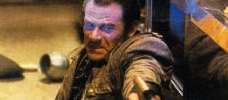
Trancers
1985 -

The Time Machine
1960 -

Groundhog Day
1993 -

Warlock
1989 -

The Navigator
1988 -
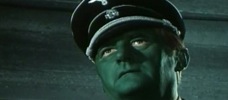
Tomorrow I’ll Wake Up and Scald Myself with Tea
1977 -

The Spirit of ‘76
1990 -

Flight of the Navigator
1986 -

La jetée
1962 -

Twelve Monkeys
1995 -

Beastmaster 2: Through the Portal of Time
1991 -
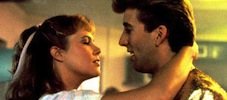
Peggy Sue Got Married
1986 -
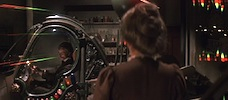
Time After Time
1979 -
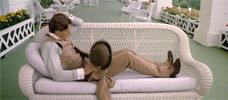
Somewhere in Time
1980 -
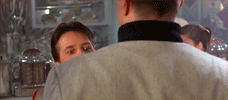
Back to the Future
1985 -

Back to the Future Part II
1989 -

Back to the Future Part III
1990 -
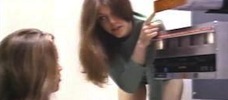
Idaho Transfer
1973 -
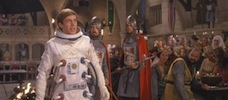
Unidentified Flying Oddball
1979 -

Slaughterhouse-Five
1972 -

The Lake House
2006 -

Time Bandits
1981 -
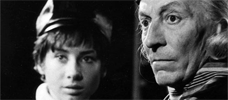
Doctor Who
1963–present -
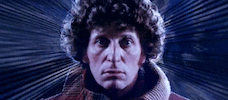
Doctor Who
1963–present
We don’t do comments anymore, but you may contact us here or find us on Twitter or Facebook.



